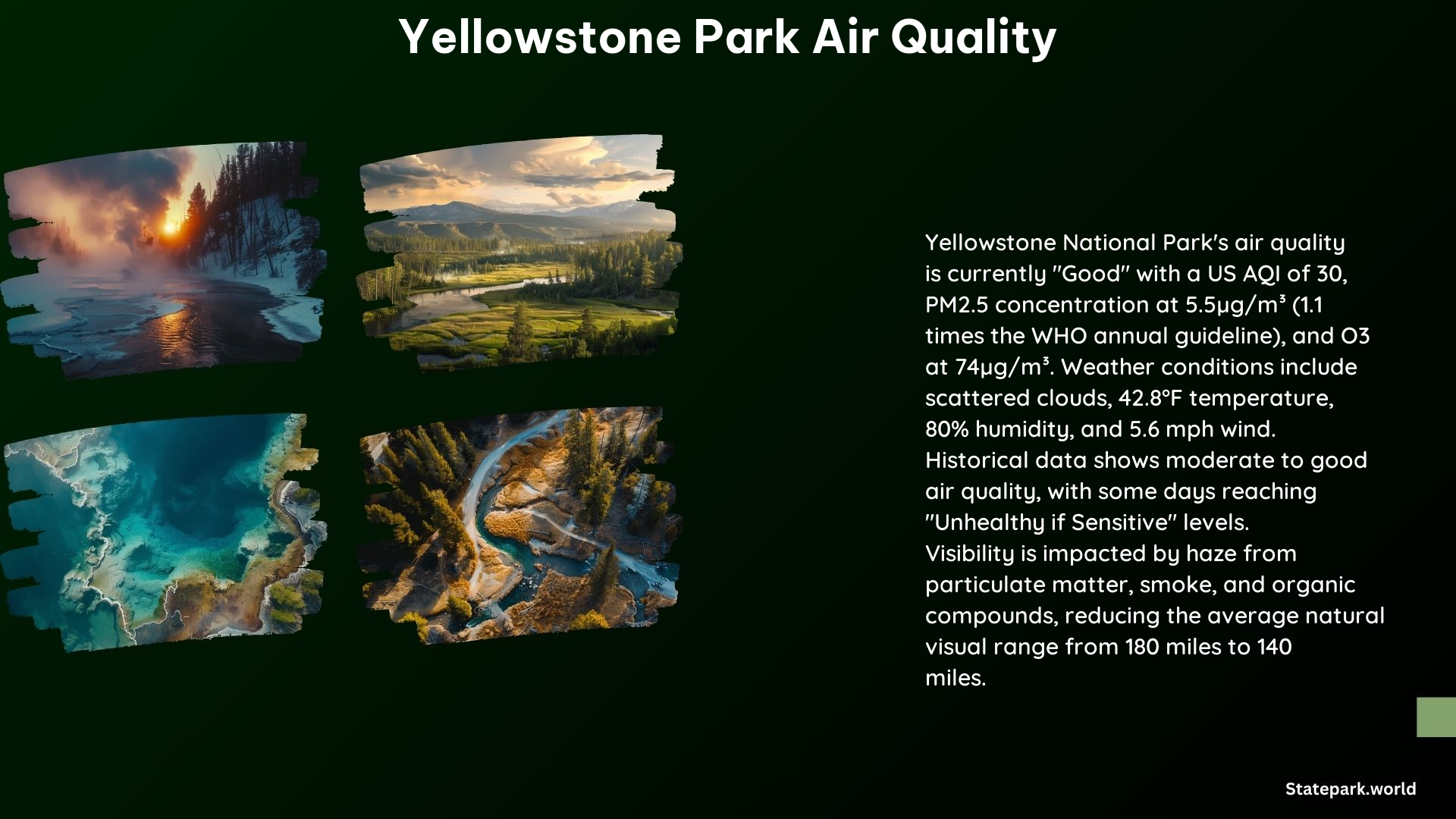Yellowstone National Park, a natural wonder located in the heart of the American West, faces ongoing challenges with air quality due to various pollutant sources. From over-snow vehicles to regional power plants and wildfires, the park’s air quality is a critical concern for both visitors and the preservation of its delicate ecosystem.
Main Pollutants Affecting Yellowstone National Park
-
Over-snow Vehicles: Snowmobiles and other over-snow vehicles used for winter tourism in Yellowstone emit pollutants such as carbon monoxide, fine particulate matter, and hydrocarbons, which can harm human health and the environment.
-
Regional Power Plants and Wildfires: Emissions from regional coal-burning power plants and wildfires contribute to mercury pollution, which is a unique issue for Yellowstone due to its geothermal features.
-
Particulate Matter (PM2.5): Tiny particles in the air reduce visibility and can cause serious health issues, including respiratory problems and cardiovascular disease. The current PM2.5 concentration in Yellowstone National Park is 5.5µg/m³, which is 1.1 times the WHO annual air quality guideline value.
-
Ground-Level Ozone: Ozone can aggravate respiratory diseases and cause throat irritation, headaches, and chest pain.
Visibility and Health Impacts

The air pollution in Yellowstone National Park has a significant impact on both visibility and visitor health:
-
Visibility: Air pollution reduces the average natural visual range from 180 miles to 140 miles. On high pollution days, the visual range can drop below 75 miles, diminishing the park’s stunning vistas.
-
Health Risks: Exposure to poor air quality can lead to coughing, difficulty breathing, aggravated asthma, and chronic respiratory disease. Sensitive groups, such as children, older adults, and those with pre-existing conditions, are more vulnerable to these health impacts.
Current Air Quality and Forecast
-
Current Air Quality Index (AQI): The AQI in Yellowstone National Park is currently “Good” with a US AQI of 30.
-
24-Hour Air Quality Forecast: The forecast indicates “Fair” air quality for most individuals, but sensitive groups may experience minor to moderate symptoms from long-term exposure.
Monitoring and Management Efforts
The National Park Service (NPS) is actively working to address the air quality issues in Yellowstone National Park:
-
NPS Air Resources Division: The NPS reports on park conditions and trends for mercury and other pollutants, and works to address air pollution effects through science, policy, and planning.
-
Air Quality Monitoring Stations: There are monitoring stations in the park that provide real-time data on air quality, including particulate matter, ozone, and other pollutants.
Visitor Information
To help visitors navigate the air quality challenges in Yellowstone National Park, the following resources are available:
-
Air Quality Webcams: Visitors can check live air quality webcams to plan their activities and minimize exposure to poor air quality.
-
Health Precautions: Visitors are advised to reduce time spent outside if they experience symptoms such as difficulty breathing or throat irritation, especially on poor air quality days.
By understanding the main pollutants, their impacts, and the ongoing efforts to monitor and manage air quality, visitors to Yellowstone National Park can make informed decisions to protect their health and enjoy the park’s natural beauty.
References
- National Park Service. (2024). Park Air Profiles – Yellowstone National Park. Retrieved from https://www.nps.gov/articles/airprofiles-yell.htm
- IQAir. (2024). Air quality in Yellowstone National Park. Retrieved from https://www.iqair.com/us/usa/wyoming/yellowstone-national-park
- AccuWeather. (2024). Yellowstone National Park, WY Air Quality Index. Retrieved from https://www.accuweather.com/en/us/yellowstone-national-park/82190/air-quality-index/30138_poi
- National Park Service. (2024). Live Weather & Air Quality Data. Retrieved from https://www.nps.gov/subjects/air/current-data.htm?location=west-entrance&site=yell
